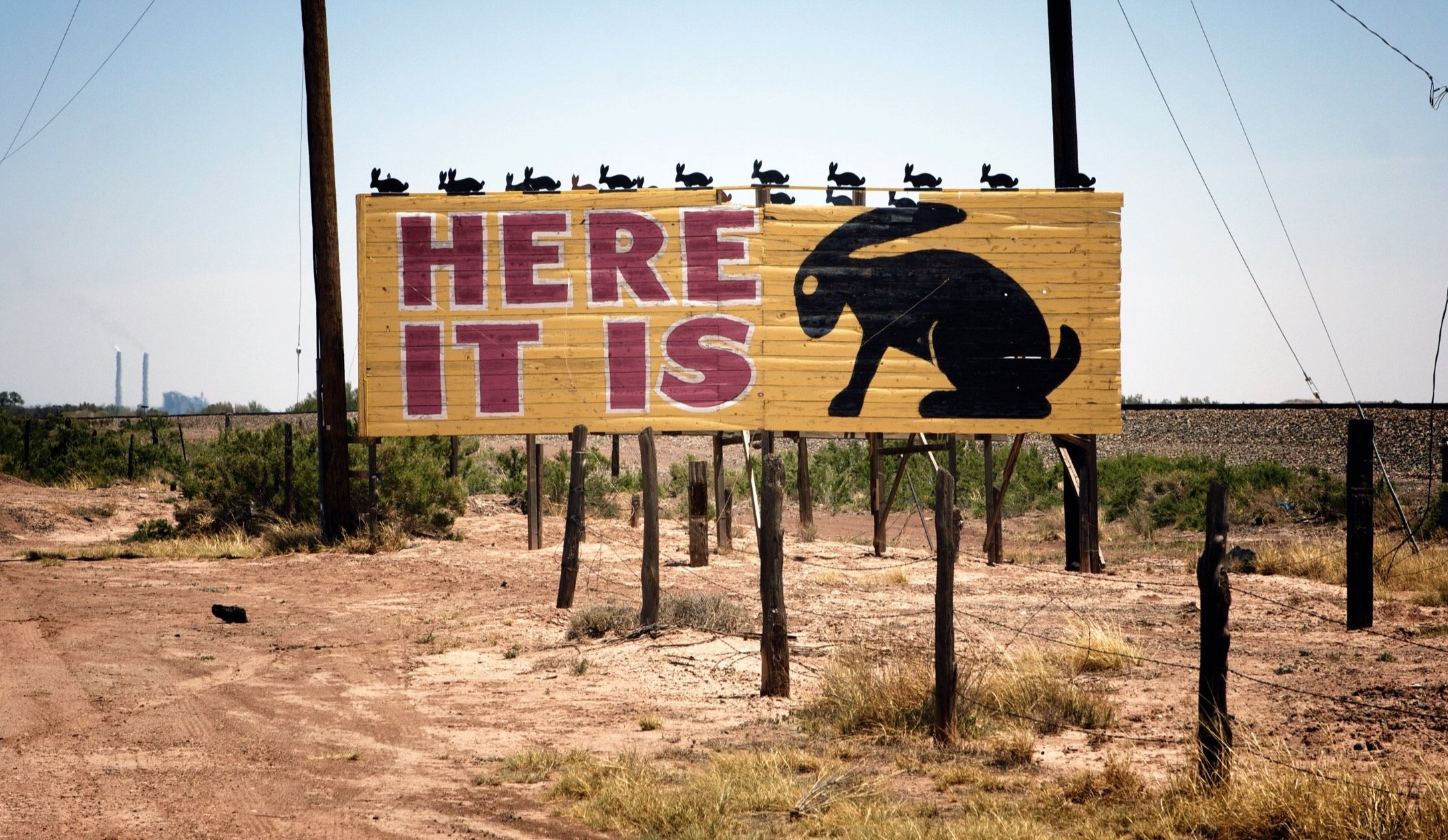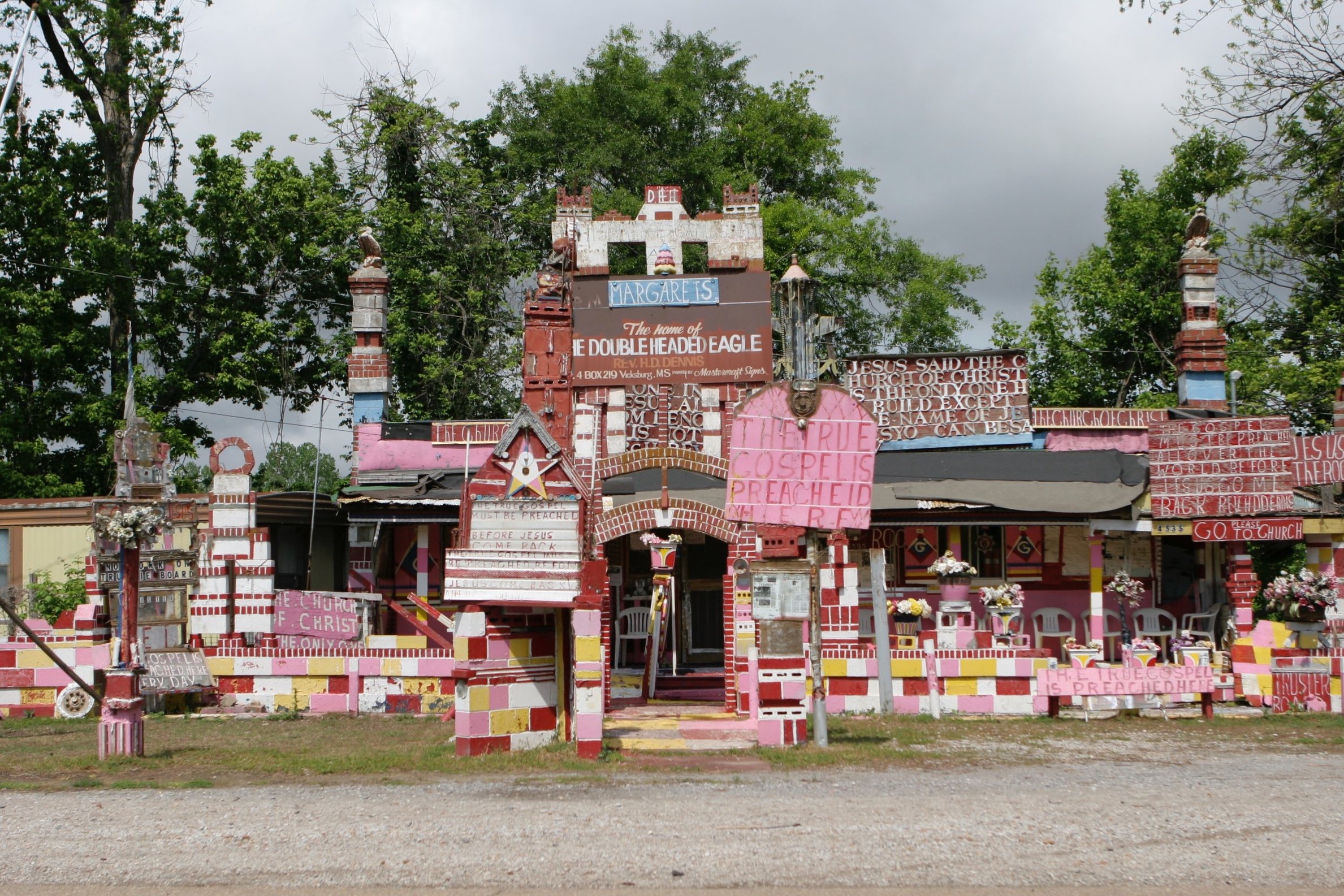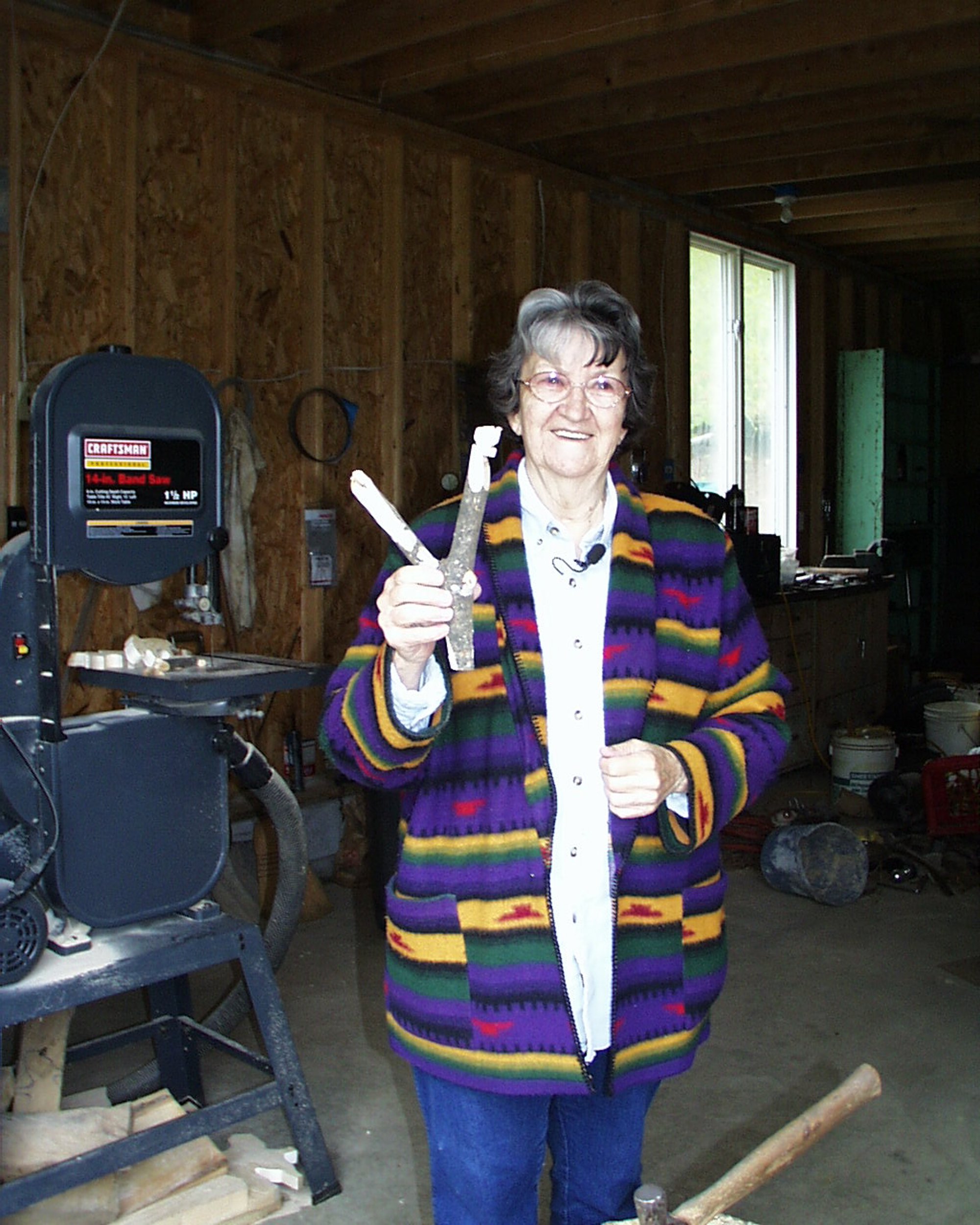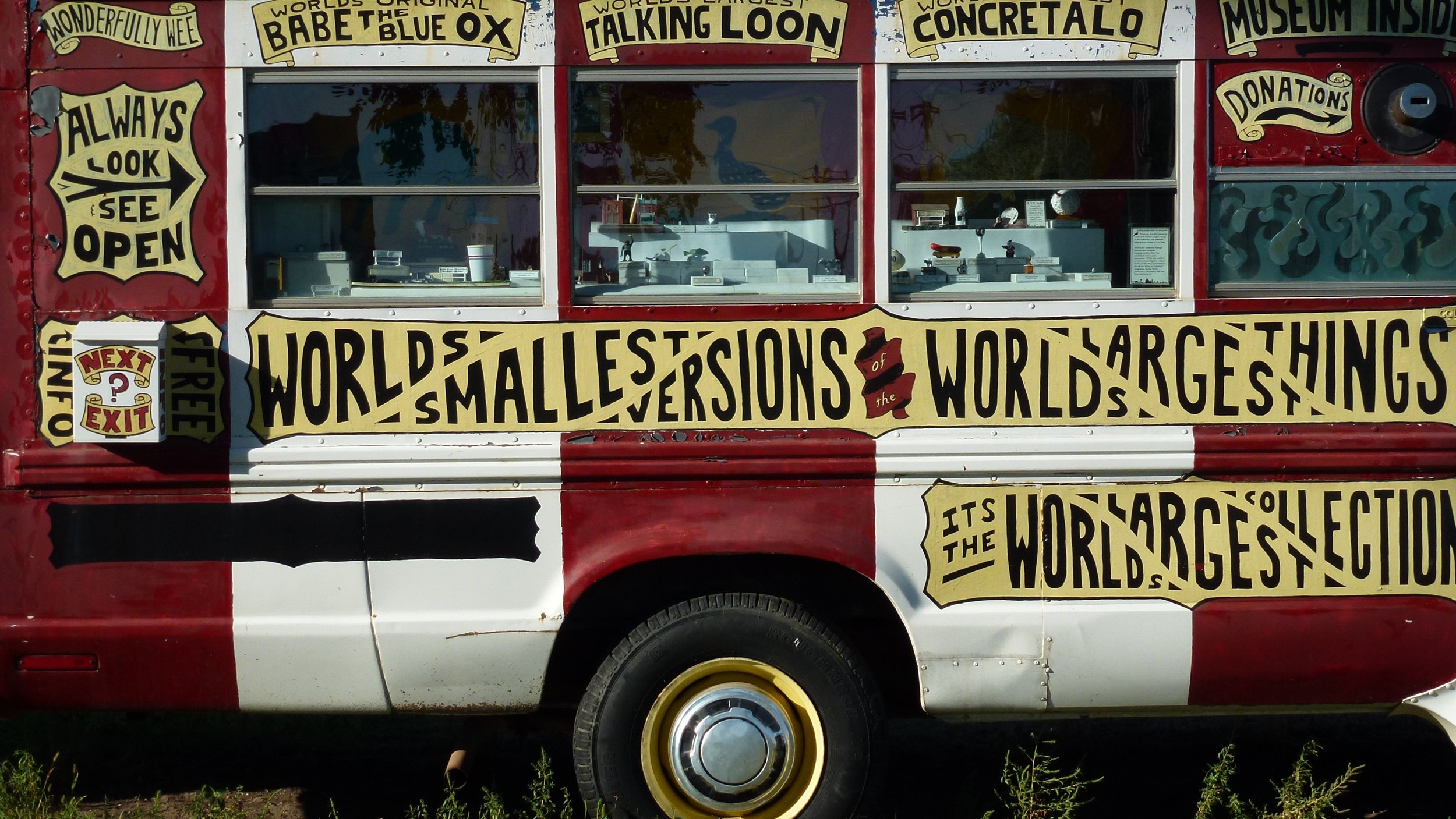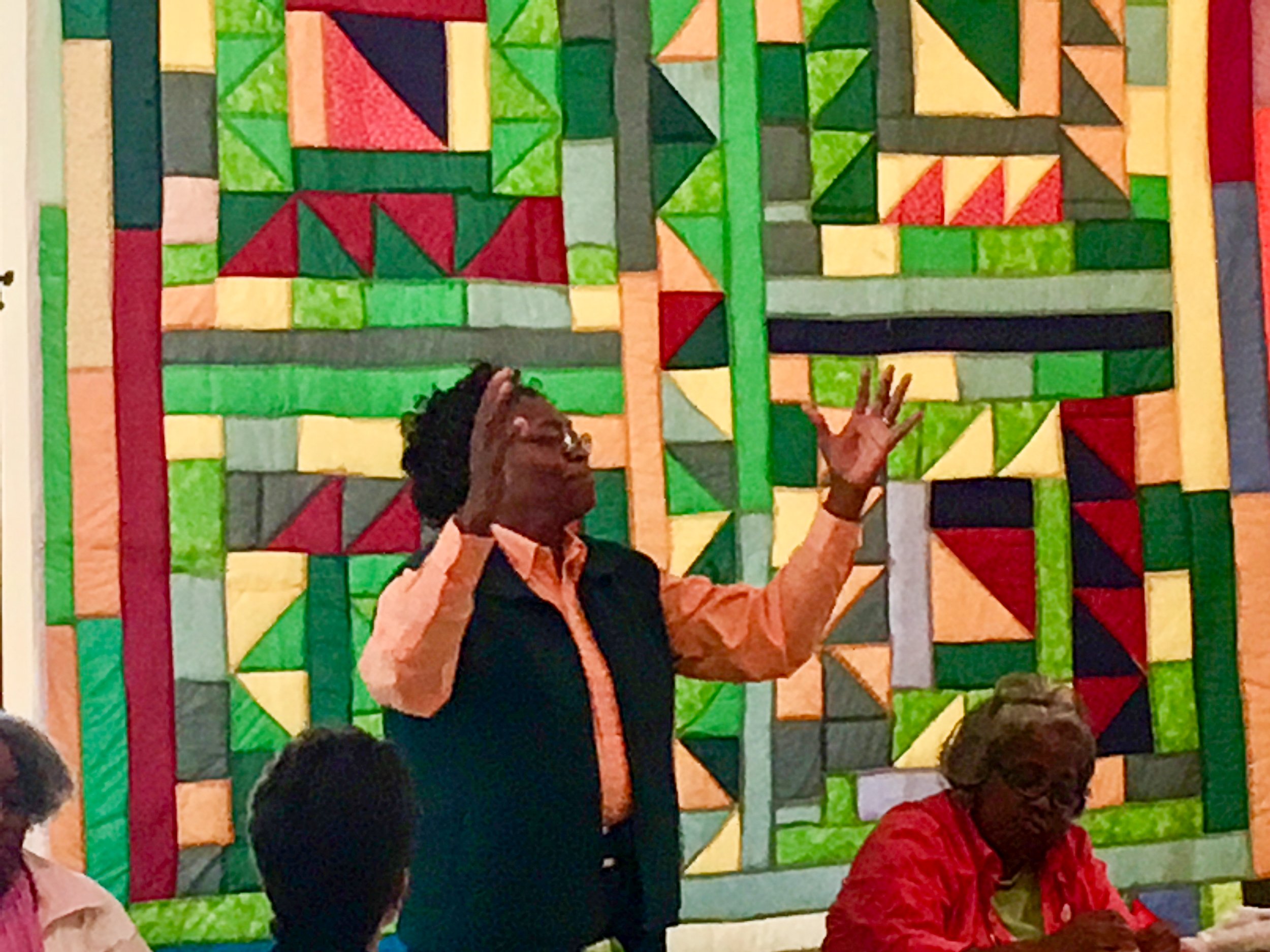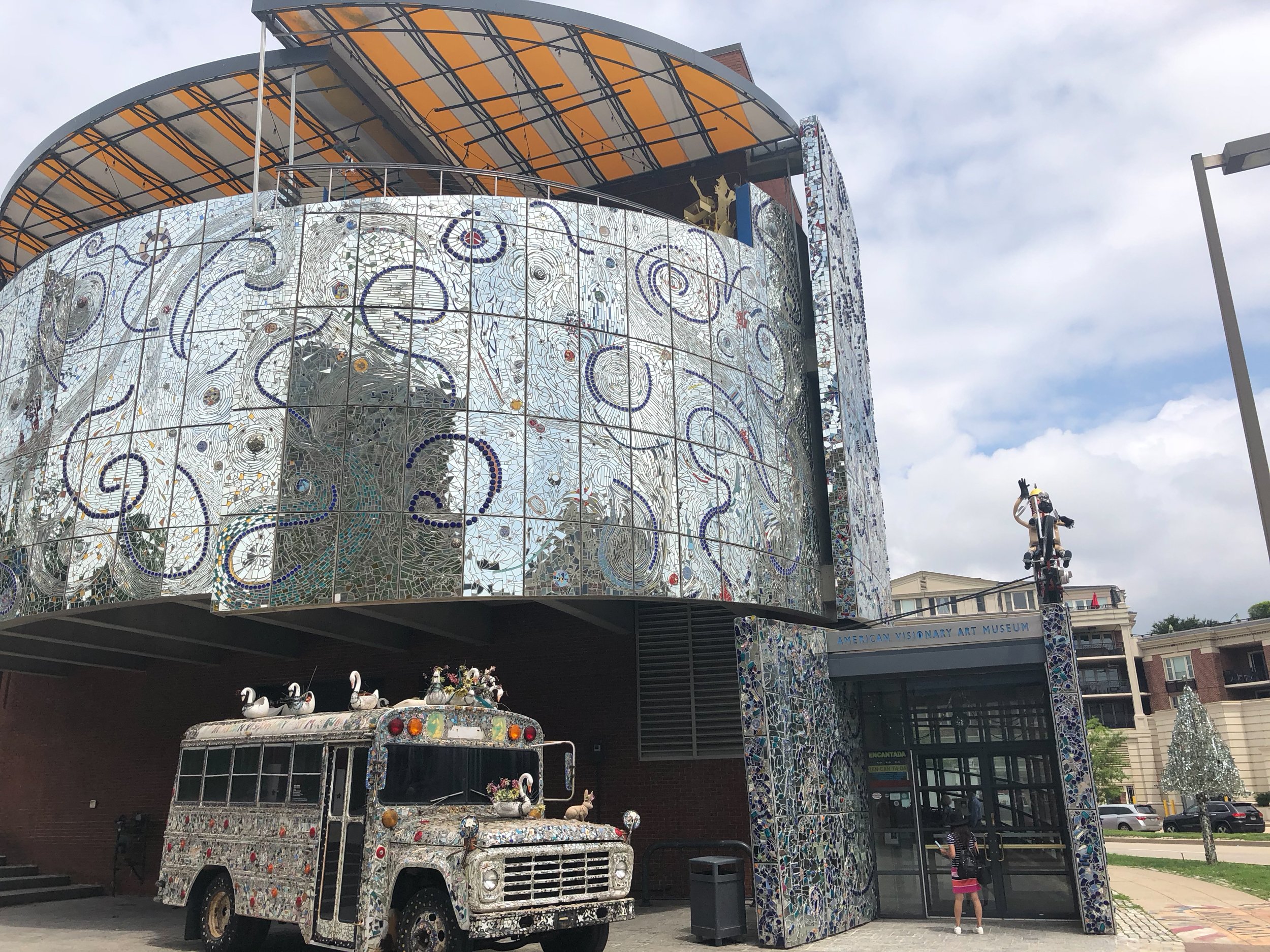
Detour Art
A curated guide to Artist-built Environments
region by region, coast-to-coast.
Dedicated to the sheer joy of outsider, folk, visionary, self-taught, vernacular art and environment discoveries found all along the back roads (and side streets).
Artist-built Environments in the United States
Note: Things change, so check first before arriving. When visiting art environments, remember they are usually on private property, so please be respectful and don’t trespass.
“PECULIAR TRAVEL SUGGESTIONS ARE DANCING LESSONS FROM GOD.”
— Kurt Vonnegut
Road stories
Minnie Adkins
Minnie Adkins began whittling as child, back when women didn't carry pocketknives or hunks of wood. But that didn't stop Minnie from carving roosters and dogs from sticks whenever she had the chance. She's continued to develop her craft and her possums, foxes, and chickens, and more are prominently featured at the Kentucky Folk Art Center and in some of the world's top collections of self-taught art. After her first husband, Garland, died, Minnie remarried and convinced the new guy, Herman,that he had the makings of an artist too, though he prefers working with metal. The couple hunkered down in a new, improved version of what they call Happy Gizzard Hollow, which has become an axis of self-taught art for the rural community around it.
World's Largest Collection of the World’s Smallest Versions of the World's Largest Things — Erika Nelson
Erika Nelson is a visionary artist, educator and one of America’s foremost experts and speakers on the World’s Largest Things. She is a national researcher and speaker on Grassroots Art environments, Roadside Attractions and Architecture, and the World’s Largest Things. Nelson is also the founder and curator of a unique and innovative traveling roadside attraction and museum called “The World’s Largest Collection of the World’s Smallest Versions of the World’s Largest Things.”
Clementine Hunter and the Melrose Plantation
Clementine Hunter was a self-taught Black folk artist from the Cane River region of Louisiana, who lived and worked on Melrose Plantation.
Hunter was born into a Louisiana Creole family at Hidden Hill Plantation near Cloutierville, in Natchitoches Parish, Louisiana. She started working as a farm laborer when young, and never learned to read or write. In her fifties, she began to sell her paintings, which soon gained local and national attention for their complexity in depicting Black Southern life in the early twentieth century.
Initially she sold her first paintings for as little as 25 cents. But by the end of her life, her work was being exhibited in museums and sold by dealers for thousands of dollars. Clementine Hunter produced an estimated 5,000 to 10,000 paintings in her lifetime.
The Quilters of Gee’s Bend
Gee’s Bend is a small rural community nestled into a curve in the Alabama River. The town’s women developed a distinctive, bold, and sophisticated quilting style based on traditional American (and African American) quilts, but with a geometric simplicity reminiscent of Amish quilts and modern art. The women of Gee’s Bend passed their skills and aesthetic down through at least six generations to the present.
A sparkling Museum of Self-taught art in Baltimore
When you see one of Vollis Simpson's whirligigs adorning the front lawn of a museum, you know it's no ordinary place. This is indeed the mecca for those who appreciate work by self-taught, outsider or visionary artists. AVAM features three full floors of art displayed in long-running shows that cover a specific theme like "aging" or "war and peace." Their permanent collection contains a number of works by Ted Gordon, Howard Finster, Gerald Hawkes and the Baltimore Glassman, Paul Darmafall.

